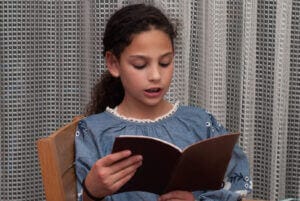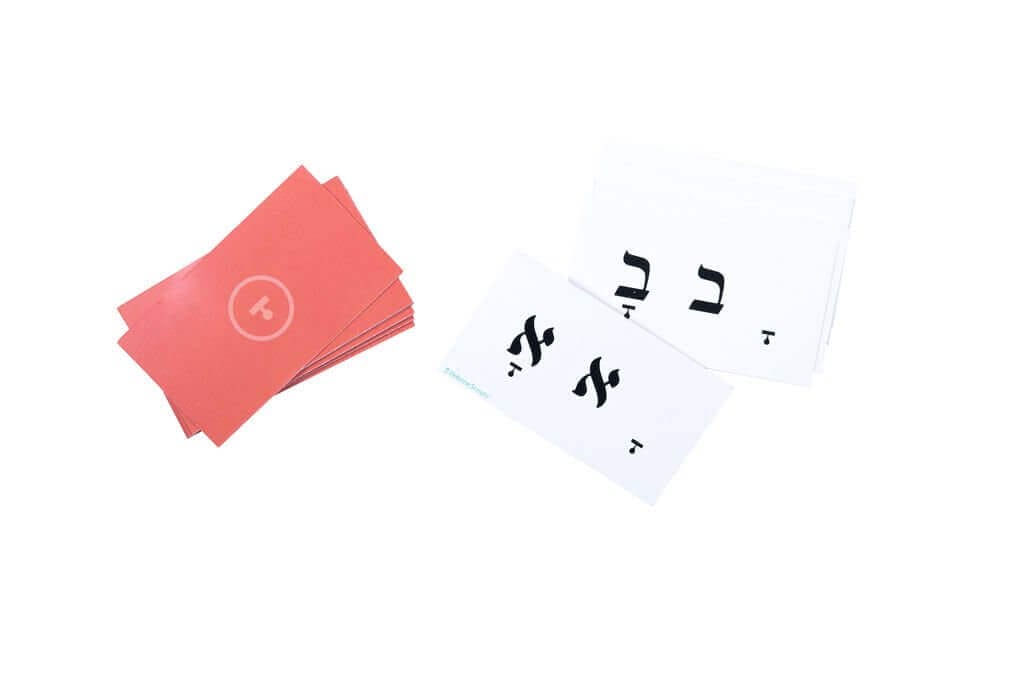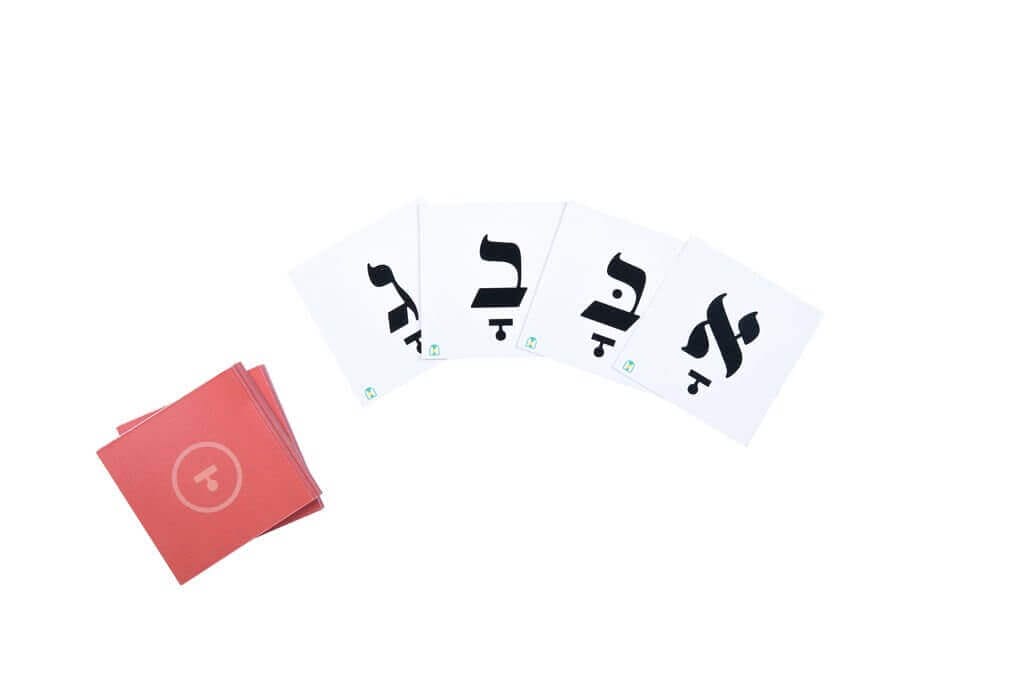One thing we can all agree on is that our collective goal as parents, teachers, and educators is to find the clearest, easiest way to teach children how to read Hebrew. In this pursuit, we may turn to our traditional roots, the mesorah, and to the latest research to find answers to our most pressing pedological questions. We consult with experts in the field and conduct our own experiments, as we ceaselessly try to figure out effective instructional methods to help all children get over the mountain.
Research in accordance with the science of reading has shown that children need to be phonemically aware in order to learn to read properly, and that the reason why many children struggle is because they lack phonemic awareness. Some educators question the possibility of teaching phonemic awareness while adhering to the traditional mesorah approach to Kriah. While other educators question using the use of the mesorah approach thinking that it has not been working for many children. And finally, there are educators that really want to follow the traditional approach, knowing it has spiritual and customary values.
While many children can intuitively hear the first sounds of the letter names and they can easily learn to blend them with the Nekudot, there are many, many children who cannot do this. They struggle to learn using the Mesorah method without phonemic awareness training. This may explain why many educators have been torn between following mesorah or other approaches.
We need to understand both the mesorah method of Kriah and phonemic awareness training to explore if the two contradict each other or if we can use them together to enhance Hebrew language education for our children.
What is Phonemic Awareness?
Phonemic awareness is one of the foundational pillars of literacy and refers to the specific and advanced understanding of the individual sounds, or phonemes, that make up words. It involves being able to identify and manipulate individual sounds within words.
In the English language, each letter or group of letters represents a sound or a phoneme. In order to read a word, children need to retrieve the sound for each letter and blend them together to make a word. For example, they have to be able to recognize that the word “cat” has three sounds or phonemes – /k/, /a/, and /t/ – and blend them all together to read the full word.
Children first become aware of the first sound of a word, then the final then the middle. Finally, after they are aware of the sounds in words with three sounds, they can start working with longer words.
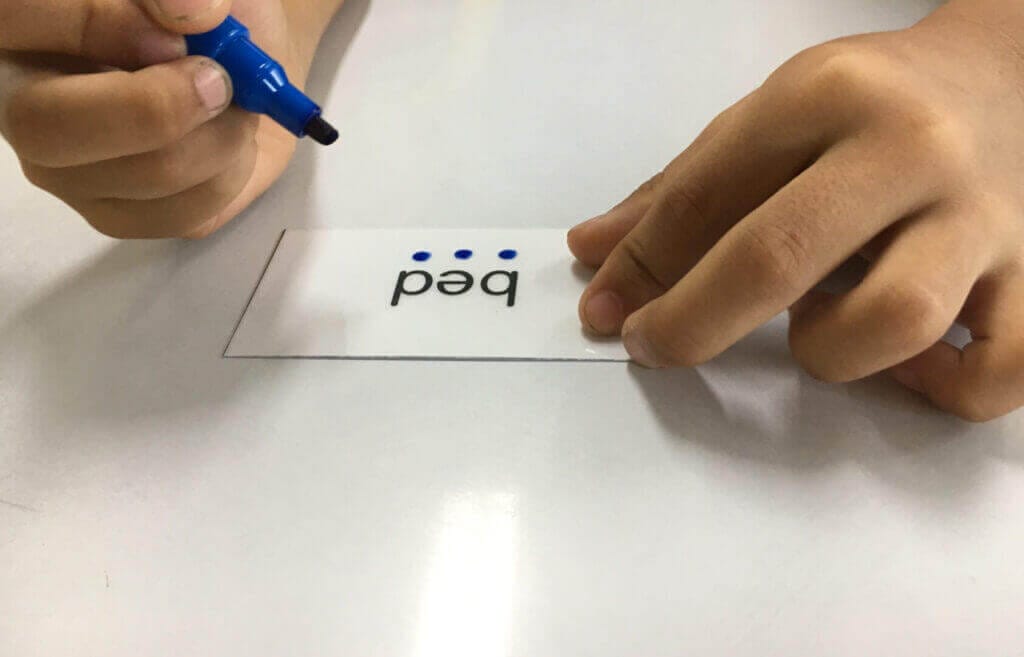
Some educators, while looking for different method to make Hebrew reading easier, they naturally looked to the English system. In modeling the English method for blending syllables, they teach children to:
- Call the letter by their sounds ( Bet=Bih, Gimmel=Gih…), as if there is a “Shvah” beneath the letters.
- Then, they teach the child to blend the letters with the Nekudot. (Ex. Bais=Bih and Kamatz=Uh, then blend together to say Buh).
This method makes children retrieve separate sounds for each letter and vowel and then blend them together. While children may become aware of the sounds each symbol represents, this method may not actually make reading easier. It may not really help children. Not only does this approach require children to blend sounds that can be taught blended, it also required children them to clip off the extra /ih/ sound they may add to sounds. It is hard to say /b/ so children may say /bih/, then they need to be trained to just say /b/. Essentially, this method adds two unnecessary and complicated steps that can make learning harder.
The umbrella diagram below demonstrates how phonological awareness progresses from larger units of sounds to smaller units, as the drops progress from left to right. Working with words in a sentence is easier than working with syllables. Blending syllables is much easier and simpler than blending phonemes.
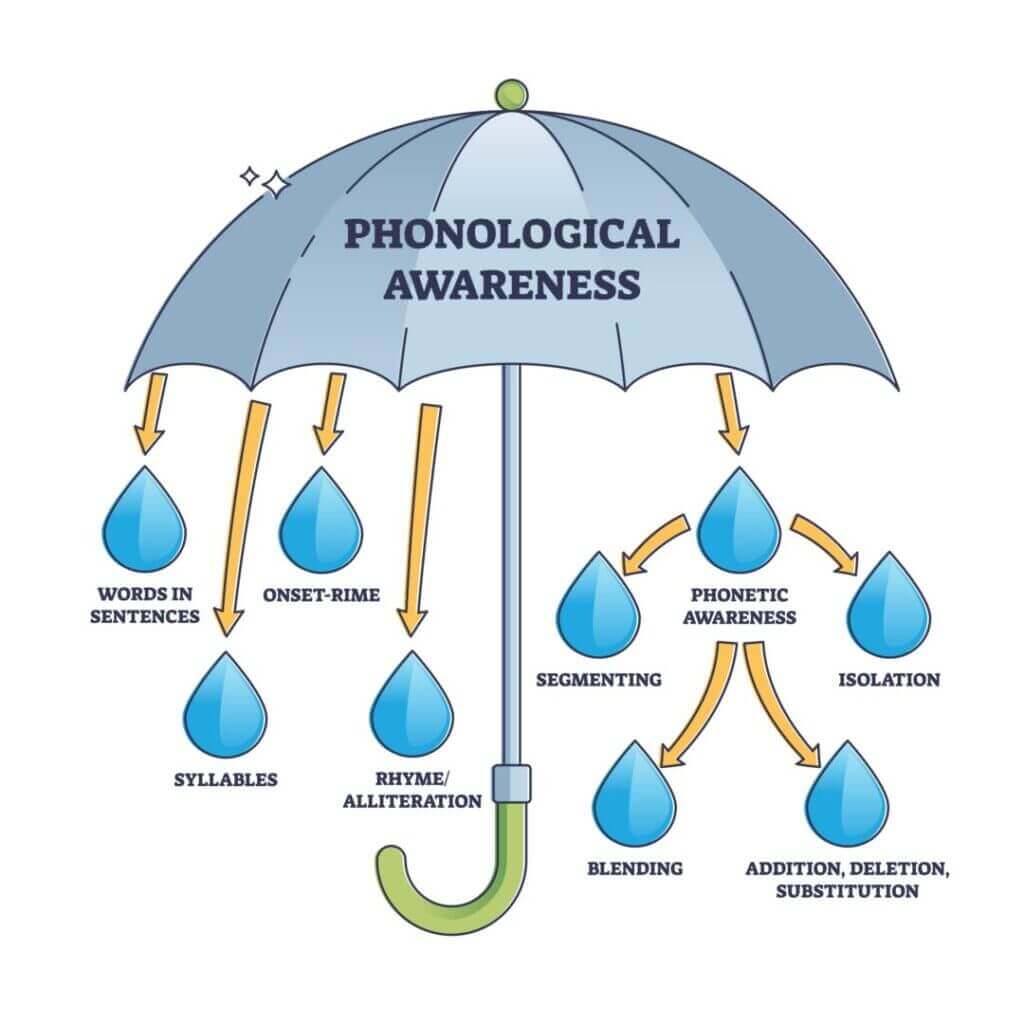
What is the Mesorah Method?
The alef bet and nikudot are very holy. Hashem used these holy letters to create the world and to write the Torah. Jewish tradition places a strong value on teaching children the holy letters as a goal in itself, to help with their spiritual development and connection, not just as a means to learning how to read. Therefore the Rabbis have placed much emphasis on the matter of teaching alef bet according to traditional mesorah.
The Rebbe said in a Sicha “It is the Horo’oh of our Rebbeim to teach children the letters separately, the Nekudos separately, and only afterwards, as a separate study, to blend them together.”
The Mesorah method breaks down teaching Hebrew into different stages:
1) First teach the letters of the Alef-Beis by their respective holy names (Alef, Beis etc.)
2) Then separately teach them the Nekudos by their respective holy names (Komatz, Patach, etc.)
3) Then, finally, to teach him how to join them together (“Komatz Alef Ah” “Komatz Beis Bah” etc.)
According to Torah, the Hebrew letters are compared to a body and the nikudot are compared to a soul. The letters need vowels to make sounds just like a body needs a soul to move. The letters only represent a mouth position and they need a vowel to push air and make a sound.
In the Hebrew language, almost each letter in a word has a vowel (nekudah) attached to it. The letter and its vowel together become a syllable unit called a body. When learning to read Hebrew according to mesorah, children do not need to pronounce one letter individually; they can learn to read syllables where the a letter and a vowel are combined as one unit to begin with. The children do not need to blend the first consonant sound with the vowel because it is already blended. Once a child read a syllable or the body of a word, it is much easier to add another phoneme than if a child had to blend three phonemes. This makes reading Hebrew words much easier than reading an English word.
Reading basic Hebrew words using mesorah methodology requires syllable awareness and only early phonemic awareness. On the contrary, reading a Hebrew words using English blending techniques increases the phonemic awareness demand and requires working with initial, medial and final sounds. Many children with poor phonological processing abilities can actually have a much easier time reading Hebrew words than English words if they learn to read syllables.
However, if children are taught to call the letters and vowels by their “sounds” and then blend each sound individually, it will requires a lot more phonemic awareness and it is more difficult for children to learn how to do. It is harder, takes longer, and causes a lot of learning struggles for many children.
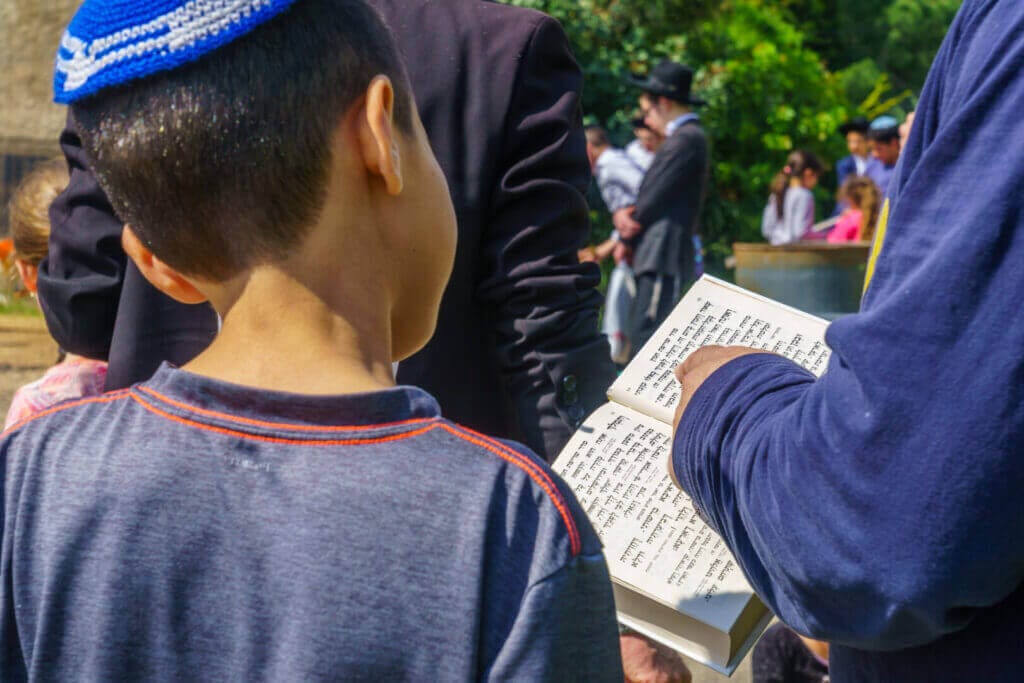
So What’s the Solution?
There is actually a Halachic obligation that mandates us to teach students in a way that will be most beneficial for them. In order to implement the best of both worlds and find a system that works for all children, we need phonemic awareness training that is specific to the Hebrew language and works harmoniously with the Mesorah approach. How do we do that?
- Children learn letter names
- Children learn to segment the first sound of letters names
- Children learn to rhyme the first sound of letters with a vowel to read syllables
- Children read syllables
- Children can blend syllables to read open syllable words like Sarah, parah
- Children can add a phoneme to a syllable to read closed syllable words like dahg, har, yahd…
This syllable reading approach is supported by science. It is called the body coda blending method and it is easier than phoneme blending and it is consistent with Hebrew phonology.
